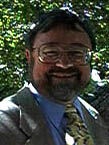Michael Zeilik
 In 1992, I received a grant from the National Science Foundation to transform the introductory astronomy course for non-science majors. Little did I know then that the effort would transform my professional life! My proposal imagined an "electronic collaboratory" for the class. In the pilot tests, it was a total failure.
In 1992, I received a grant from the National Science Foundation to transform the introductory astronomy course for non-science majors. Little did I know then that the effort would transform my professional life! My proposal imagined an "electronic collaboratory" for the class. In the pilot tests, it was a total failure.
Meanwhile, the grant forced me to review the literature on effective teaching strategies. I came across the Force Concept Inventory in physics. The idea clicked: For years I had thought that the real measure of the effectiveness of a course was the gains of the students, from their "initial condition" at entry to their "final state" at the end. But I never could work out an implementation of the idea. Luckily, Candace Schau was a member of my interdisciplinary research team and brought her expertise in statistics and assessment. She convinced me that we needed a "misconceptions measure" for a pre- and post-test. We developed this assessment based on the misconceptions research in astronomy (especially that of Project STAR). I found it a difficult task, but it did illuminate patterns I had perceived in my 20+ years of teaching the introductory astronomy course. That clinched it for me.
We labored on the Astronomy Diagnostic Test (ADT) for four semesters. I did not realize until a year after the final effort that we were developing the astronomical version of something like the Force Concept Inventory, though not as highly focused as the FCI. As I gave talks about the conceptual astronomy project, people asked me for copies of the test. In summer 1998, the Astronomical Society of the Pacific (ASP) met in Albuquerque; the meeting included a symposium on the introductory astronomy course. I announced the availability of ADT 1.0 and handed out about 100 copies. Other requests came in by email. During the ASP meeting, Jeff Adams, Tim Slater, Beth Hufnagel and others agreed that we needed an ADT version 2, based on version 1, but revised in the light of student interviews. These were conducted in fall 1998 at Montana State University and the University of Maryland. These collaborative efforts resulted in ADT version 2.
Tell me more about this technique:

